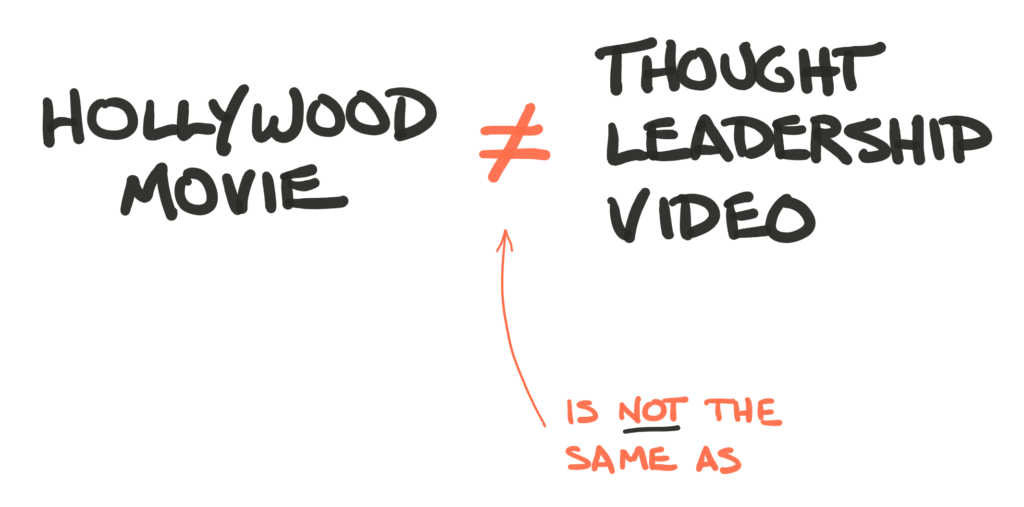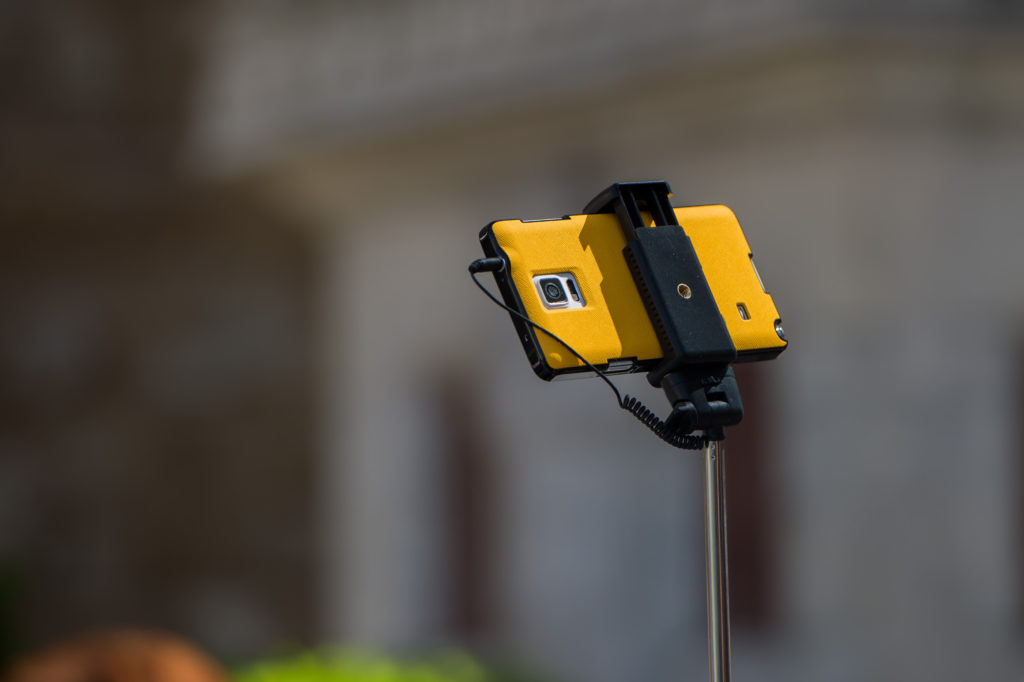The Content Marketing Hack, Part II: Debunking Video Production Myths
By David Chapin
SUMMARY
VOLUME 10
, NUMER 6
Last month I discussed three trends that are affecting your clients, your prospects, and yes, the people inside your organization, including your subject matter experts. These trends are: • Time-starvation: there’s more to do for everyone, and less time to do it. • Choice-saturation: there are more alternatives; it’s harder to know which path is best. • Guidance-hunger: people need help making sense of all these choices.
Your prospects are oversaturated with choice, they need guidance and yet, they’re time-starved. You can help these prospects by committing to creating thought leadership—deep insights that help your prospects with their challenges. As you help them, you’ll build a tribe of followers, they’ll respect you, trust you, pay attention to what you have to say, recommend you to others, and ultimately hire you.
The Content Marketing Hack, Part II: Debunking Video Production Myths from Forma Life Science Marketing on Vimeo.
Last month I discussed three trends that are affecting your clients, your prospects, and yes, the people inside your organization, including your subject matter experts.
These trends are:
- Time-starvation: there’s more to do for everyone, and less time to do it. Hence, a graphic designer must be mindful of which logo animation software they use.
- Choice-saturation: there are more alternatives; it’s harder to know which path is best.
- Guidance-hunger: people need help making sense of all these choices.
Your prospects are oversaturated with choice, they need guidance and yet, they’re time-starved. You can help these prospects by committing to creating thought leadership—deep insights that help your prospects with their challenges. As you help them, you’ll build a tribe of followers, they’ll respect you, trust you, pay attention to what you have to say, recommend you to others, and ultimately hire you.
This is nothing new; it’s the basic content marketing value proposition, invented by scientists three and a half centuries ago in the form of peer-review publishing. And though it started as peer-review publishing and relevant to only a handful of people, content marketing is now widely relevant, particularly in life science marketing. But many SMEs (subject matter experts) in life science organizations have trouble writing thought leadership content. They’ve been conditioned by their exposure to peer-reviewed journal articles to believe that all written thought leadership must meet the same standards as these articles. So many SMEs find it incredibly difficult to create effective thought leadership.
This conundrum is at the core of the “content marketing hack” I introduced in the last issue. The hack involves using a specific type of video to capture and distribute thought leadership and insight from your life science subject matter experts. I call this TLoV—Thought Leaders on Video. This is an excellent way to build a tribe of followers, people who turn to you for valuable insight.
Why video is relevant to you
Video addresses the three big trends with which I began this issue. It delivers useful guidance to your life science prospects, answering their questions quickly and cleanly in a form that is easy to consume. And video helps your life science SMEs recalibrate their thinking beyond peer-reviewed articles.
If the SMEs inside your firm spend any time at all involved in sales, you can use video. If they share their insights during the sales process and in doing so, help convince prospects to choose your offering, then you can capture their insights on video. And once you’ve done so, you can share those insights widely. In brief, you can give the entire world access to the best insights of your SMEs.
A quick aside: If you are having doubts about whether you should be sharing these insights, then I suggest you put those doubts to rest. Remember that your prospects have access to a great deal of insight already. They’re likely using a search engine to find SMEs who can answer their questions. So the issue isn’t whether you can control access to these answers and insights—you can’t; they’re already available through a search engine. The only issue is whether it will be your SMEs who share their insights, or your competitors’ SMEs. If your firm is the source for these insights, then you’ll be high on the list of firms your prospects turn to when they’re ready to buy.
The misconceptions about video.
In this issue, I want to discuss (and then debunk) some of the common (mis)conceptions about creating video.
#1 Video production is really hard. It requires specialized tools.
#2 Video production is really hard. It takes lots of time.
#3 Video production is really hard. It takes lots of people.
#4 Video production is really hard. It takes lots of specialized skills.
Some of these contain a grain of truth, but only for certain types of video. For example, it takes a Hollywood crew of hundreds of person-months (or even person-years) to produce a blockbuster that lasts for just 90 minutes or so. And it can take lots of man-months to produce a corporate “flagship” video. In terms of man-months of input per minute of output, this is not a sustainable ratio for most life science firms trying to start a dialog with prospects.
But Hollywood is facing pressures that our thought leadership won’t face. To start with, most Hollywood movies needs to be completely unique—no one wants to pay to see a movie they’ve seen before.
And Hollywood has to have really high production values. Watching lots of movies has taught audiences to be incredibly sophisticated about watching movies. In other words, audiences can spot a poorly produced movie within a few seconds, so Hollywood movies have to be produced really, really well.
But our life science thought leadership videos aren’t facing the same pressures as Hollywood movies. So we can think about our video production very differently than a Hollywood blockbuster.
Figure 1: Don’t allow any preconceptions you’ve learned from Hollywood to distort your thinking as you set about creating TLoV content. That’s a mistake.
Now, I’m not saying your audience will find terrible quality video acceptable. But let’s face it—we need our video to be able to be produced relatively easily, so we need to strike a sweet spot—using production values that are high enough to be taken seriously, but not so high that our ability to produce videos quickly is impeded.
Video misconception #1: You need specialized equipment for life science video production.
That is true if you’re making a Hollywood blockbuster. Then you’d probably want the power of a professional, 8K, high-definition video camera on a robotically-controlled boom.
We won’t be following Hollywood’s path. You can get great quality video from a cell phone. The results may not be good enough to be projected on a big screen at your local multiplex, but it’s certainly good enough to be viewed on a desktop monitor, or more likely, on a cell phone itself. And the prevalence of videos shot on a phone means that your audience is used to watching this type of video.
Figure 2: Video misconception #1 is that you need lots of expensive, professional equipment to produce TLoV. You can produce good TLoV on a simple set-up, like this cell phone on a tripod.
Besides your cell phone, there’s some additional equipment you can purchase to help your video come across as more professional. You don’t need it, but you’ll want it, because it will help your videos communicate more professionally. But this equipment won’t break the bank; we bought the equipment we use for less than $1000 (excluding the cell phone we use for recording the video and the iPad we use as a teleprompter. If you’re interested in a list of recommended equipment, write to me at info@formalifesciencemarketing).
Video misconception #2: it takes a really long time for life science video production.
Yes, it can take hundreds of man years to produce a Hollywood blockbuster, and it can take lots of man-months to create a corporate video. But let’s look at some of the steps that go into creating that type of video.
| Activity | Hollywood (or corporate) video workflow |
| Position | Audience and concept |
| Plan | The big idea |
| Prepare | Themes and conflict |
| Storyboard | |
| Script | |
| Talent | |
| Locations | |
| Legal wrangling | |
| Shoot | Recording |
| Post production | Voiceover |
| Music | |
| Graphics | |
| Editing | |
| Promotion | Marketing |
| Distribution |
Figure 3: The Hollywood workflow involves lots of work, and lots of steps, just a few of which are shown here.
Many of these steps also apply when creating a “flagship” video for a corporation, something that would be featured on the home page of a web site.
The TLoV workflow
That’s a lot of work in the table above, right? Entire careers are built out of the work involved in any one row of that table. But for our TLoV videos, we can simplify many of the steps. For example, we don’t have to create a storyboard of each and every cut and camera angle, because our videos will create engagement with ideas and insight, not with computer generated graphics or fight scenes. There are many aspects that we can omit, and there will be many that will be one-time choices. For example, we won’t have to audition talent or scout locations; those will be one-time choices. Once we’ve made that choice, we’re done.
| Activity | Hollywood (or corporate) video workflow | TLoV workflow |
| Position | Audience & concept | Who we serve, what we offer, why we’re unique |
| Plan | The big idea | The big idea |
| Prepare | Themes and conflict | (not needed for TLoV) |
| Storyboard | (not needed for TLoV) | |
| Script | Script | |
| Talent | Typically done just once | |
| Locations | Typically done just once | |
| Legal wrangling | (not needed for TLoV) | |
| Shoot | Recording | Recording |
| Post production | Voiceover | (not needed for TLoV) |
| Music | Typically done just once | |
| Graphics | Typically done just once | |
| Editing | Editing | |
| Promotion | Marketing | SEO optimization |
| Distribution | Distribution | |
Figure 4: The TLoV workflow involves reusing a lot of the initial set up, making it easier to produce each video.
For TLoV videos, the set-up will be the same from video to video. The lighting will be the same, the backdrop will be the same; we’ll set up the audio once, and it will be the same from then on. Reusing all this effort makes it a lot faster to produce a life science thought leadership video.
In fact, once you get everything set up, producing TLOV videos are pretty straightforward, because many of the steps are repetitive. That’s what enables us to produce them quickly. In the words of the famous infomercial: set it and forget it.
Video misconception #3: It requires lots of people for life science video production.
It doesn’t take an entire village of people to produce a good TLoV video. Unlike a Hollywood movie, a TLoV requires the following basic roles:
- On-screen SME, someone to have the insight, write the content and then speak those words into a camera.
- Camera operator, someone to capture the event.
- Post-production editor, someone to take the raw footage and edit it into final form.
- Distributor, someone to take the final footage and distribute it (typically by positing it on your web site).
At Forma, we fill all these roles with two people, one on-camera and one off-camera. The roles here are really clear: we’ve got a thought leader (someone who creates the insight and writes the script to share that insight) and a second person who helps translate that insight into a professional TLoV video. Other roles, such as a script editor, can be added if it makes sense to do so. And some roles can be divided: technicians for camera and audio can be split into two roles.
But if you split all your tasks, you run the risk of multiplying the effort and coordination required to produce a video. So I want you to think about going the other way, reducing the effort and coordination down to the bare minimum. That way, you’ll be more likely to maintain the effort required.
Figure 5: It doesn’t take an entire movie crew to produce a TLoV video. At Forma, we produce our TLoV using two people. We use a spare office as our studio.
In terms of space, you don’t need an entire back lot to create TLoV. Here at Forma, we’re fortunate to have a spare office that we can dedicate as our “TLoV studio.” But a spare office is a luxury. If we had to, we could set up and tear down our recording setup once a month, and record whatever we needed to during a day or two.
Video misconception #4: It takes lots of sophisticated skills for life science video production.
Video misconception #4 is that you need lots of skills to produce life science thought leadership video. Unfortunately, this does have some truth to it. You need to be able to use a basic video editing tool. But the competition among video software makers has put an emphasis on ease of use. So most of the simple video editors, like iMovie, are capable of producing elementary, but still acceptable, TLoV. You can create more sophisticated video with more sophisticated tools, of course, but you don’t really need them to get the insights from your thought leaders out into the world in a basic way.
Conclusion: Life science thought leadership video production is within your grasp.
Technical experts often use the standards of peer-reviewed journal articles when they contemplate writing thought leadership. This is a mistake; the two have separate purposes, and so must meet different criteria.
Similarly, many of us rely on our conceptions of Hollywood movies as we contemplate creating life science thought leadership video. This is also a mistake; the two have very different purposes, and so must meet different criteria.
In future white papers, I’ll continue to explore the ways you can harness your thought leadership on video, and produce content that your life science prospects find valuable.
In closing I’ll leave you with one thought. Imagine that a prospect visits your web site and finds dozens of videos. Each is short, only a minute or two in length. Each offers one or two nuggets of really valuable insight. In fact, this insight is so unique that prospects volunteer their email address in exchange for continued up-to-date access. In this way, you’re building a tribe of people who have opted-in to having an ongoing conversation with you.
This is not far-fetched; you can grow your tribe using a content marketing hack. It involves TLoV—putting your life science subject matter experts on camera, and capturing their thought leadership on video.
If you need help getting started, let us know. Once you get started, you won’t want to quit.
The Marketing of Science is published by Forma Life Science Marketing approximately ten times per year. To subscribe to this free publication, email us at info@formalifesciencemarketing.com.
David Chapin is author of the book “The Marketing of Science: Making the Complex Compelling,” available now from Rockbench Press and on Amazon. He was named Best Consultant in the inaugural 2013 BDO Triangle Life Science Awards. David serves on the board of NCBio.
David has a Bachelor’s degree in Physics from Swarthmore College and a Master’s degree in Design from NC State University. He is the named inventor on more than forty patents in the US and abroad. His work has been recognized by AIGA, and featured in publications such as the Harvard Business Review, ID magazine, Print magazine, Design News magazine and Medical Marketing and Media. David has authored articles published by Life Science Leader, Impact, and PharmaExec magazines and MedAd News. He has taught at the Kenan-Flagler Business School at UNC-Chapel Hill and at the College of Design at NC State University. He has lectured and presented to numerous groups about various topics in marketing.
Forma Life Science Marketing is a leading marketing firm for life science, companies. Forma works with life science organizations to increase marketing effectiveness and drive revenue, differentiate organizations, focus their messages and align their employee teams. Forma distills and communicates complex messages into compelling communications; we make the complex compelling.
© 2024 Forma Life Science Marketing, Inc. All rights reserved. No part of this document may be reproduced or transmitted without obtaining written permission from Forma Life Science Marketing.



